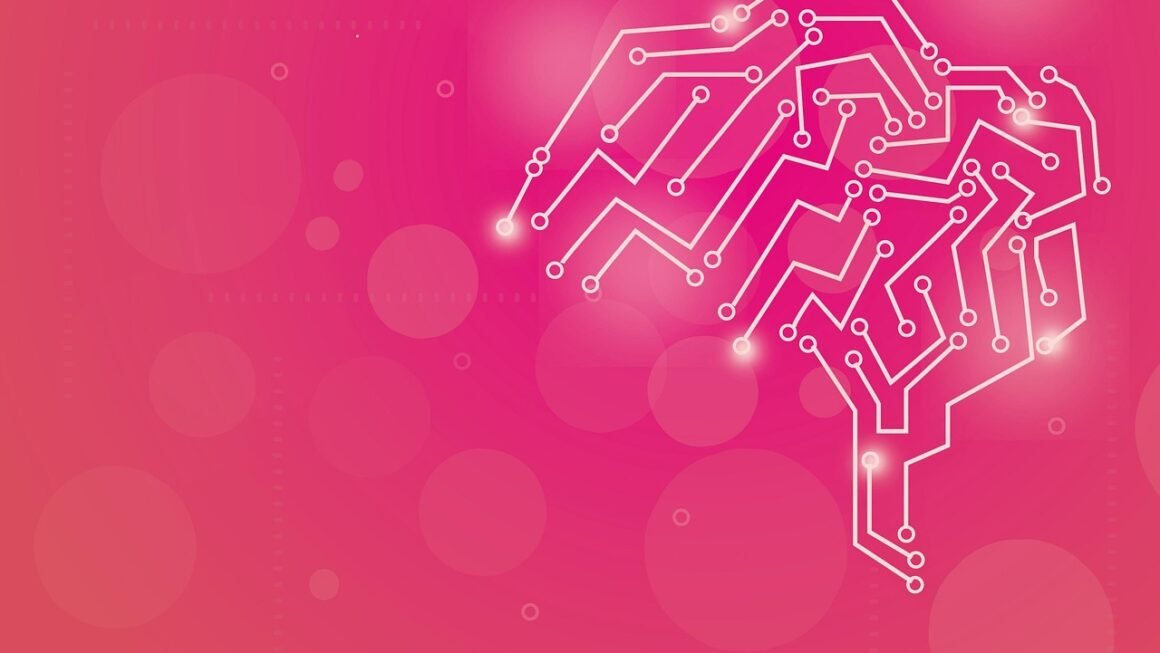Artificial Intelligence (AI) is rapidly transforming industries and reshaping how we interact with technology. At the heart of this revolution lie AI algorithms, the intricate sets of rules and statistical calculations that enable machines to learn, reason, and solve problems. Understanding these algorithms is crucial for anyone seeking to leverage the power of AI, whether you’re a business leader, a data scientist, or simply a curious observer. This comprehensive guide will demystify AI algorithms, exploring their various types, applications, and future potential.
What are AI Algorithms?
Defining AI Algorithms
AI algorithms are essentially sets of instructions that enable computers to perform tasks that typically require human intelligence. These tasks can include:
- Learning from data
- Recognizing patterns
- Making decisions
- Solving problems
Unlike traditional software programs that follow fixed rules, AI algorithms can adapt and improve their performance over time through a process called machine learning. They leverage statistical techniques to identify patterns, make predictions, and optimize outcomes.
The Core Components of an AI Algorithm
Several key components contribute to the functionality of an AI algorithm:
- Data: The raw material that fuels the learning process. High-quality, relevant data is essential for training effective AI models.
- Features: Specific attributes or characteristics extracted from the data that the algorithm uses to make predictions.
- Model: The mathematical representation of the relationships between the features and the desired outcome.
- Learning Algorithm: The process by which the model adjusts its parameters to minimize errors and improve accuracy.
- Evaluation Metrics: Quantifiable measures used to assess the performance of the model and guide further refinement.
Practical Examples of AI Algorithm Use Cases
AI algorithms are deployed across a wide range of industries:
- Healthcare: Diagnosing diseases, personalizing treatment plans, and predicting patient outcomes. For example, algorithms are used to analyze medical images for early detection of cancer.
- Finance: Detecting fraud, assessing credit risk, and automating trading strategies. High-frequency trading algorithms execute trades based on market conditions at incredibly fast speeds.
- Marketing: Personalizing advertising campaigns, recommending products, and optimizing customer experiences. Recommendation engines like those used by Netflix and Amazon are powered by sophisticated algorithms.
- Manufacturing: Optimizing production processes, predicting equipment failures, and improving quality control. Predictive maintenance algorithms can analyze sensor data to identify potential equipment failures before they occur.
Types of AI Algorithms
AI algorithms can be broadly categorized into several distinct types, each suited for different tasks and data types.
Supervised Learning
Supervised learning algorithms learn from labeled data, where each input is paired with the correct output. The algorithm’s goal is to learn the mapping between inputs and outputs so that it can accurately predict the output for new, unseen inputs.
- Examples: Linear Regression, Logistic Regression, Support Vector Machines (SVM), Decision Trees, Random Forests, Neural Networks (particularly for classification tasks).
- Applications: Image recognition, spam filtering, fraud detection, credit scoring.
- Actionable Takeaway: If you have labeled data and want to predict a specific outcome, supervised learning is a strong starting point.
Unsupervised Learning
Unsupervised learning algorithms work with unlabeled data, where the algorithm must discover patterns and structures on its own.
- Examples: Clustering (k-means, hierarchical clustering), Dimensionality Reduction (Principal Component Analysis – PCA), Association Rule Mining.
- Applications: Customer segmentation, anomaly detection, recommendation systems, market basket analysis.
- Actionable Takeaway: Use unsupervised learning when you need to uncover hidden patterns and insights in unlabeled data.
Reinforcement Learning
Reinforcement learning algorithms learn by interacting with an environment and receiving feedback in the form of rewards or penalties. The algorithm’s goal is to learn a policy that maximizes its cumulative reward over time.
- Examples: Q-learning, Deep Q-Networks (DQN), Policy Gradient Methods.
- Applications: Robotics, game playing (e.g., AlphaGo), autonomous driving, resource management.
- Actionable Takeaway: Reinforcement learning is ideal for situations where an agent needs to learn how to make optimal decisions in a dynamic environment.
Deep Learning
Deep learning is a subfield of machine learning that uses artificial neural networks with multiple layers (hence “deep”) to analyze data. These networks are capable of learning complex patterns and representations from large amounts of data.
- Examples: Convolutional Neural Networks (CNNs), Recurrent Neural Networks (RNNs), Transformers.
- Applications: Image recognition, natural language processing (NLP), speech recognition, machine translation.
- Actionable Takeaway: Deep learning excels at handling complex, unstructured data and can achieve state-of-the-art results in many applications, but requires significant computational resources.
Choosing the Right AI Algorithm
Selecting the appropriate AI algorithm for a specific problem is a crucial step. Here’s a breakdown of factors to consider:
Understanding Your Data
- Data Type: Is your data numerical, categorical, textual, or image-based? Different algorithms are better suited for different data types.
- Data Size: How much data do you have? Some algorithms require large amounts of data to train effectively, while others can work with smaller datasets.
- Data Quality: Is your data clean, accurate, and complete? Data preprocessing and cleaning are essential for building robust AI models.
Defining Your Goal
- Prediction: Do you want to predict a specific outcome (e.g., customer churn, stock price)? Supervised learning algorithms are typically used for prediction tasks.
- Pattern Discovery: Do you want to uncover hidden patterns and relationships in your data (e.g., customer segments, product associations)? Unsupervised learning algorithms are well-suited for this.
- Decision Making: Do you want to develop an agent that can make optimal decisions in a dynamic environment (e.g., robot control, game playing)? Reinforcement learning algorithms are a good choice.
Evaluating Algorithm Performance
- Accuracy: How accurately does the algorithm make predictions?
- Precision: How many of the positive predictions made by the algorithm are actually correct?
- Recall: How many of the actual positive cases are correctly identified by the algorithm?
- F1-Score: A balanced measure of precision and recall.
- Computational Cost: How much time and resources does it take to train and run the algorithm?
- Example: Suppose you want to build a system to classify emails as spam or not spam. Your data is labeled (spam/not spam), so you’d use supervised learning. Given that the data consists of text, you might choose algorithms like Naive Bayes, Support Vector Machines (SVM), or even a deep learning approach like a Recurrent Neural Network (RNN). You’d then evaluate the performance of each algorithm using metrics like accuracy, precision, recall, and F1-score to select the best one.
The Future of AI Algorithms
AI algorithms are constantly evolving, driven by advances in computing power, data availability, and algorithmic innovation.
Emerging Trends
- Explainable AI (XAI): Making AI models more transparent and understandable so that humans can trust and interpret their decisions.
- Federated Learning: Training AI models on decentralized data sources without sharing the raw data.
- AutoML: Automating the process of selecting, configuring, and deploying AI models.
- Generative AI: Algorithms that can generate new content, such as images, text, and music.
Ethical Considerations
As AI algorithms become more powerful and pervasive, it is crucial to address ethical concerns such as:
- Bias: Ensuring that AI models are fair and unbiased and do not perpetuate societal inequalities.
- Privacy: Protecting sensitive data used to train AI models.
- Accountability: Establishing clear lines of responsibility for the decisions made by AI systems.
- Security:* Protecting AI systems from malicious attacks and misuse.
Statistical data shows that companies prioritizing ethical AI practices are more likely to build trust with their customers and stakeholders. According to a recent survey by Deloitte, 88% of executives believe that ethical risks are associated with AI technologies.
Conclusion
AI algorithms are the engines that drive the artificial intelligence revolution. By understanding their various types, applications, and the factors involved in choosing the right algorithm, you can unlock the immense potential of AI to solve complex problems, improve decision-making, and create new opportunities. As AI continues to evolve, staying informed about the latest advancements and ethical considerations is essential for responsible and impactful innovation. Embracing AI and its algorithms is no longer a choice, but a necessity for individuals and organizations seeking to thrive in the digital age.



